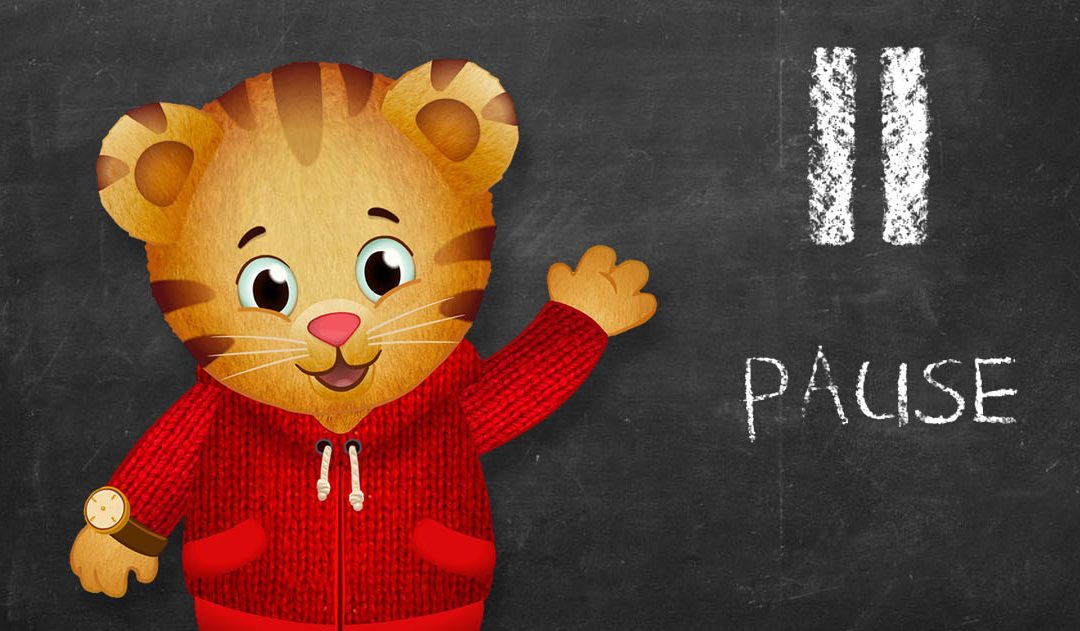The new documentary “Won’t You Be My Neighbor” has a near perfect Rotten Tomato score (99%). Older reviewers tend to treat the film with nostalgic joy (here’s Joe Morgenstern from the WSJ), and newbie writers are inspired to create enthused listicles such as “11 Things We Learned About Fred Rogers”. While fun, these articles wind up revealing details that are more fun to learn during the movie (truly, they’re spoilers). Just go see the movie – it will make you keenly aware of how differently anyone over 35 consumed media when the were younger. Pace, variety and volume -you name it; it’s a whole new neighborhood, today.

We all remember Fred – fondly at first, especially when he has those puppets in hand. But then, we recall him with a level of wariness. Rogers was trained as a minister and studied linguistics under child development experts at University of Pittsburgh. But, he swerved from the ministry when he got a glimpse of television. He started a successful show on public television and one day, to fill a programming gap, he picked up a puppet. The rest is television history.
Mister Rogers, as we came to call him, delighted a generation (mine) by speaking directly to children with honesty and respect. Later, when Saturday Night Live and comedians like Eddie Murphy took to parodying Mister Rogers, feelings of discomfort surfaced. Could anyone really be that earnest without being creepy? Director Morgan Neville (“Twenty Feet from Stardom”) isn’t afraid to tackle these uncomfortable oddities. In the end, the film reveals Rogers as a persistently kind person. An unusual guy, but isn’t that part of being a visionary?
Fred Rogers was a radical programmer – from the deliberate pace and messaging of his show to the way he took on raw, political issues and talked about them with kids. You remember, he puts on his cardigan and sneakers in real time, calmly chatting or singing. You may not necessarily remember this from watching this show – but, he talked about the word assassination after Bobby Kennedy died. He knew kids were witness to their parent’s distress over current events and wanted to provide context. And, when Americans weren’t sure how they felt about African Americans swimming in public pools, the photo below depicts the response from Mister Rogers Neighborhood. Just two guys cooling off on a hot day.

WON’T YOU BE MY NEIGHBOR?
Fred Rogers (left) with Francois Scarborough Clemmons (right)
So… how are today’s parents supposed to cope with TV programming that barrages kids with images and stories, music and action? Luckily, there is some great programming out there; Angela Santomero, creator of Blue’s Clues, is “a modern-day Fred Rogers”, according to Fred’s widow. On her latest show Daniel Tiger’s Neighborhood, (produced by Fred Rogers Productions), the main character pauses to let pre-schoolers reflect and talk back to the screen. It’s appropriate that Angela chose Daniel Tiger for the new show, for the puppet turns out to have been Fred’s alter-ego. To feel as though your ideas are being heard is a key developmental step for a young child; Santomero has carried Mister Rogers’ ideals into present day programming. Here is a link to her website and, here is Common Sense’s review of the show (five stars and good for 3+).

Fred had a gift for knowing how kids think, and furthermore, he understood that giving them time to absorb a new idea was critical for their development. The deliberate phrasing about every possible issue and idea was intentional – something Rogers labored over in an effort to communicate accurately with kids. Here’s an interesting Atlantic Magazine piece that explores his use of language and careful editing of every line in the show. In fact, there was a manual to explain “Freddish”.
Per the pamphlet, there were nine steps for translating into Freddish:
- “State the idea you wish to express as clearly as possible, and in terms preschoolers can understand.” Example: It is dangerous to play in the street.
- “Rephrase in a positive manner,” as in It is good to play where it is safe.
- “Rephrase the idea, bearing in mind that preschoolers cannot yet make subtle distinctions and need to be redirected to authorities they trust.” As in, “Ask your parents where it is safe to play.”
- “Rephrase your idea to eliminate all elements that could be considered prescriptive, directive, or instructive.” In the example, that’d mean getting rid of “ask”: Your parents will tell you where it is safe to play.
- “Rephrase any element that suggests certainty.” That’d be “will”: Your parents can tell you where it is safe to play.
- “Rephrase your idea to eliminate any element that may not apply to all children.” Not all children know their parents, so: Your favorite grown-ups can tell you where it is safe to play.
- “Add a simple motivational idea that gives preschoolers a reason to follow your advice.” Perhaps: Your favorite grown-ups can tell you where it is safe to play. It is good to listen to them.
- “Rephrase your new statement, repeating the first step.” “Good” represents a value judgment, so: Your favorite grown-ups can tell you where it is safe to play. It is important to try to listen to them.
- “Rephrase your idea a final time, relating it to some phase of development a preschooler can understand.” Maybe: Your favorite grown-ups can tell you where it is safe to play. It is important to try to listen to them, and listening is an important part of growing.
There’s much to be unpacked and appreciated in this documentary. Director Morgan Neville won an Oscar for “Twenty Feet From Stardom” and in his hands, this film is a perfect balance of walking back through memory and using a contemporary lens to examine the radical nature of an important figure from recent history. After the film, you’ll grab at your Kleenex and decide that you love Fred, “just the way” he was.
Links of note:
The Fred Rogers Center (advice about using media with young kids)

